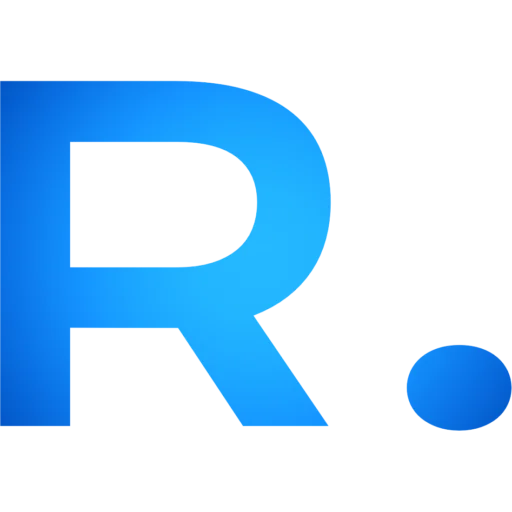Para qualquer operação de reciclagem bem-sucedida, a jornada do resíduo à matéria-prima valiosa exige precisão em todas as etapas. Após transformar garrafas pós-consumo em flocos limpos em um sistema de reciclagem de garrafas PET de alto desempenho, surge uma decisão crítica: como processar esses flocos em sua forma mais comercializável. A peletização é a resposta, mas escolher a tecnologia certa é fundamental.
Os dois métodos dominantes no setor são a peletização tradicional por filamentos e a peletização subaquática (UWP), mais avançada. Cada um oferece vantagens distintas e apresenta diferentes considerações operacionais e financeiras. Este guia oferece uma comparação direta para ajudá-lo a determinar a solução ideal para sua operação de rPET.
O Cavalo de Batalha: Compreendendo a Pelletização de Fios
O processo de peletização de fios é um método robusto e amplamente adotado. O fluxo de trabalho é linear e visualmente intuitivo:
- Extrusão: O rPET derretido é extrudado através de uma matriz, formando fios contínuos semelhantes a espaguete.
- Resfriamento: Esses fios passam por um banho de água ou calha para esfriar e solidificar.
- Desidratação: Uma faca de ar ou unidade de sucção remove o excesso de água da superfície dos fios.
- Corte: Os fios secos e resfriados são alimentados em um peletizador, onde um rotor de alta velocidade com lâminas de corte os corta em pelotas cilíndricas.
O Método de Precisão: Compreendendo a Peletização Subaquática (UWP)
A peletização subaquática é um processo mais integrado e automatizado, valorizado por sua precisão e consistência.
- Extrusão e Corte: O rPET fundido é extrudado através de uma placa de matriz que está em contato direto com um sistema de circulação de água. Lâminas rotativas cortam o polímero em pellets no momento em que ele emerge da face da matriz, debaixo d'água.
- Refrigeração e Transporte: Os pellets esféricos recém-formados são imediatamente solidificados pela água e transportados como uma pasta para longe do cabeçote.
- Desidratação: A pasta é alimentada em um secador centrífugo, que gira em alta velocidade para separar a água dos pellets, resultando em um produto final seco.
Comparação direta: Strand vs. Underwater
A escolha de um sistema de peletização para rPET requer uma análise cuidadosa de vários fatores-chave.
1. Qualidade e consistência dos pellets
- Pelotização de fios: Produz pellets cilíndricos e uniformes. No entanto, o processo é suscetível à "quebra do filamento", o que pode levar a variações no comprimento dos pellets ("longs") e à geração de poeira ou "finos". A qualidade depende muito da habilidade do operador durante a inicialização.
- Pelotização Subaquática: Produz pellets altamente uniformes, esféricos ou lenticulares (em forma de lente), com variação mínima de tamanho e formato. O processo de resfriamento imediato resulta em baixíssima geração de poeira e finos. A UWP é geralmente considerada como produtora de pellets de qualidade superior e mais consistente, frequentemente exigida por aplicações premium.
2. Requisitos operacionais e complexidade
- Pelotização de fios: O processo é mais manual, principalmente durante a inicialização, que envolve um operador "enfiando" manualmente os fios da cabeça da matriz até o peletizador. Embora isso exija mão de obra, também torna o sistema mais tolerante a flutuações na viscosidade do fundido e mais fácil para os operadores solucionarem problemas visualmente.
- Pelotização Subaquática: Trata-se de um sistema de circuito fechado altamente automatizado, que exige menos intervenção do operador durante a execução. No entanto, o processo é mais complexo e sensível. Exige um processo de extrusão muito estável (fluxo de massa fundida, pressão e temperatura) para funcionar corretamente. A inicialização e a manutenção geralmente exigem um nível mais alto de habilidade técnica.
3. Investimento inicial e pegada
- Pelotização de fios: O investimento inicial de capital para uma linha de peletização de filamentos é significativamente menor do que para um sistema UWP. O equipamento é mecanicamente mais simples. No entanto, a área ocupada pode ser bastante extensa devido à calha de resfriamento necessária.
- Pelotização Subaquática: Essa tecnologia acarreta um custo de investimento inicial mais alto, impulsionado pelo cabeçote de corte de engenharia de precisão, sistema de têmpera a água e secador centrífugo. O tamanho geral, no entanto, costuma ser mais compacto.
4. Melhores aplicações para rPET
- Pelotização de fios: Uma escolha excelente e econômica para a produção, composição e aplicações gerais de pellets de rPET onde pequenas variações no formato dos pellets são aceitáveis. É uma ferramenta confiável para operações onde minimizar o custo inicial de capital é uma prioridade.
- Pelotização Subaquática: A escolha definitiva para aplicações de ponta que exigem uniformidade perfeita de pellets para um processamento estável. Isso inclui moldagem por injeção de peças com geometrias complexas, componentes automotivos e composição de plásticos de engenharia de alto valor, onde a consistência é inegociável.
Tabela Resumo
| Recurso | Pelotização de fios | Pelotização Subaquática (UWP) |
| Forma de pellet | Cilíndrico | Esférico / Lenticular |
| Qualidade do Pellet | Bom a excelente, potencial para multas | Excelente a Premium, altamente uniforme |
| Complexidade | Inicialização mais baixa e manual | Mais alto, automatizado, mais sensível |
| Custo inicial | Mais baixo | Mais alto |
| Pegada | Mais longo | Mais compacto |
| Ideal para | Operações de uso geral e sensíveis a custos | Aplicações de ponta, consistência perfeita |
Conclusão: Fazendo a Escolha Certa
A decisão entre peletização em filamentos ou subaquática é estratégica. Se o seu modelo de negócios se concentra na produção de rPET confiável e econômico para um mercado amplo, o menor investimento inicial e a simplicidade operacional de uma linha de peletização em filamentos a tornam uma escolha atraente. Se o seu objetivo é atingir mercados premium que exigem o mais alto grau de consistência e qualidade, a produtividade superior e a automação de um sistema de peletização subaquática justificam o investimento mais alto.
Em última análise, o sucesso de qualquer método de peletização depende da qualidade do material de entrada. Um floco limpo, seco e consistente, produzido por um linha de lavagem de plástico PET robusta, é fundamental para obter um pellet final de alta qualidade.
Na Energycle, podemos ajudar você a analisar suas necessidades específicas para determinar a melhor solução de processamento de valor agregado para seus materiais reciclados. Entre em contato com nossa equipe técnica para discutir seu projeto.



